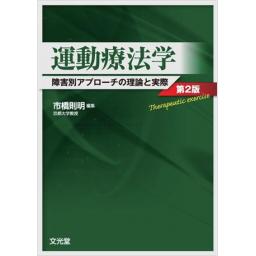1) 長岡洋介 : 力学の基礎, 東京教学社, 東京, 4-15, 2003
2) 高橋正明 : 標準理学療法学 臨床動作分析, 医学書院, 東京, 7-8, 2002
3) 臨床歩行分析研究会編 : 関節モーメントによる歩行分析, 医歯薬出版, 東京, 3-18, 2001
4) Winter DA et al : Human balance and posture control during standing and walking. Gait Posture 3 : 193-214, 1995
5) Mann RA et al : The initiation of gait. J Bone Joint Surg 61-A (2) : 232-239, 1979
6) Jian Y et al : Trajectory of the body COG and COP during initiation and termination of gait. Gait Posture 1 : 9-22, 1993
7) Neumann DA : 筋骨格系のキネシオロジー, 医歯薬出版, 東京, 2012
8) 戸松泰介 : 膝関節における負荷面の移動相に関する研究. 日整会誌 52 : 551-568, 1978
9) Brandt C et al : An evidence-based review on the validity of the Kaltenborn rule as applied to the glenohumeral joint. Man Ther 12 : 3-11, 2007
10) 西中直也ほか : 肩甲上腕関節 X線透視画像および三次元コンピュータモデルを用いた生体内動態解析による肩関節外転運動時の上腕骨頭偏位の検討. 関節外科 28 : 42-46, 2009
11) Nishinaka N et al : Determination of in vivo glenohumeral translation using fluoroscopy and shape-matching techniques. J Shoulder Elbow Surg 17 : 319-322, 2008
12) Paletta GA et al : Shoulder kinematics with two-plane x-ray evaluation in patients with anterior instability or rotator cuff tearing. J Shoulder Elbow Surg 6 : 516-527, 1997
13) Deutsch A et al : Radiologic measurement of superior displacement of the humeral head in the impingement syndrome. J Shoulder Elbow Surg 5 : 186-193, 1996
14) Howell SM et al : Normal and abnormal mechanics of the glenohumeral joint in the horizontal plane. J Bone Joint Surg Am 70-A : 227-232, 1988
15) Baeyens JP et al : Glenohumeral joint kinematics related to minor anterior instability of the shoulder at the end of the late preparatory phase of throwing. Clin Biomech (Bristol, Avon) 16 : 752-757, 2001
16) Johnson AJ et al : The effect of anterior versus posterior glide joint mobilization on external rotation range of motion in patients with shoulder adhesive capsulitis. J Orthop Sports Phys Ther 37 : 88-99, 2007
18) Baeyens JP et al : In vivo 3D arthrokinematics of the proximal and distal radioulnar joints during active pronation and supination. Clin Biomech (Bristol, Avon) 21 (Suppl 1) : S9-S12, 2006
19) Delp SL et al : Variation of rotation moment arms with hip flexion. J Biomech 32 : 493-501, 1999
20) 小栢進也ほか : 関節角度の違いによる股関節周囲筋の発揮筋力の変化-数学的モデルを用いた解析. 理学療法学 38 : 97-104, 2011
21) Santaguida PL et al : The psoas major muscle : a three-demensional geometric study. J Biomechanics 28 : 339-345, 1995
22) Dostal WF et al : Actions of hip muscles. Phys Ther 66 : 351-361, 1986
23) Klein Horsman MD et al : Morphological muscle and joint parameters for musculoskeletal modelling of the lower extremity. Clin Biomech (Bristol, Avon) 22 : 239-247, 2007
24) Steindler A : Kinesiology of the human body under normal and pathological conditions. Charles C Thomas, Springfield, 1955
25) 市橋則明ほか : 脚伸展動作と膝伸展動作の運動学的分析. 理学療法学 24 : 341-349, 1997
26) 山下謙智 : 筋電図と運動制御, そして運動成果. J J Sports Sciences 14 : 99-106, 1995
27) NSCA ジャパン編 : ストレングス&コンディショニング I (理論編), 大修館書店, 2003
